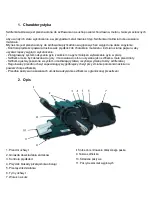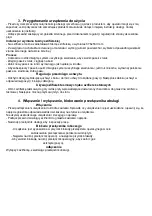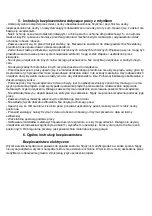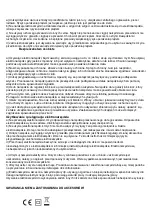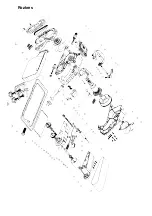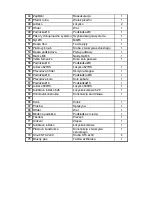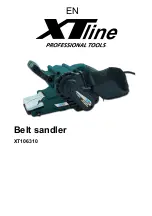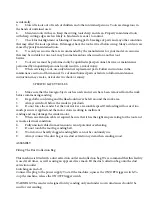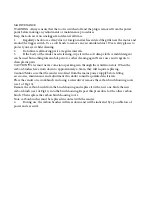
WARNING!
Read and understand all instructions. Failure to follow all instructions listed below, may result in electric
shock, fire and/or serious personal injury.
SAVE THESE INSTRUCTIONS
Work Area
1.
Keep your work area clean and well lit. Cluttered benches and dark areas invite accidents.
2.
Do not operate power tools in explosive atmospheres such as in the presence of flammable liquids,
gases, or dust. Power tools create sparks which may ignite the dust or fumes.
3.
Keep bystanders, children and visitors away while operating a power tool. Distraction can cause
you to lose control.
Electrical Safety
1. Avoid body contact with grounded surfaces such as pipes, radiators, ranges and refrigerators. There is
an increased risk of electric shock if your body is grounded.
2. Don’t expose power tools to rain or wet conditions. Water entering a power tool will increase the risk
of electric shock.
3. Do not abuse the cord. Never use the cord to carry the tool or pull the plug from an outlet. Keep the
cord away from heat, oil, sharp edges or moving parts. Replace the damaged cords immediately if you
found one. The damaged cords will increase the risk of electric shock.
4. When operating a power tool outside, use an outdoor extension cord which marked “W-A” or “W”.
These cords are rated for outdoor use , so it can reduce the risk of electric shock.
Personal Safety
1.
Stay alert, watch what you are doing and use common sense when operating a power tool. Do not
use the tool while tired or under the influence of drugs, alcohol, or medication. A moment of inattention
while operating power tools may result in serious personal injury.
2.
Dress properly. Do not wear loose clothing or jewelry. Contain long hair. Keep your hair, clothing,
and gloves away from the moving parts. Because loose clothes, jewelry, and long hair can be caught in the
moving parts.
3.
Avoid accidental starting. Be sure switch is off before plugging in. Carrying tools with your finger
on the switch or plugging in tools that have the switch on will invite accidents.
4.
Remove adjusting keys or wrenches before turning the tool on. A wrench or
a key that is left attached to a rotating part of the tool may result in personal injury.
5.
Do not overreach. Keep proper footing and balance at all times. Proper footing and balance enable
better control of the tool in unexpected situations.
6. Use safety equipment. Always wear eye protection.Dust mask, non-skid safety shoes, hard hat, or
hearing protection must be used for appropriate conditions. Ordinary eye or sun glasses are NOT eye
protection.
Tool Use and Care
1.
Use clamps or other practical way to secure and support the work piece to a stable platform.
Holding the work piece by hand or against your body is unstable and may lead to loss of control.
2.
Do not force tool. Use the correct tool for your application. The correct tool will do the job better
and safer at the rate for which it is designed.
3.
Do not use tool if the switch can not turn on or off. Any tool that cannot be controlled with the
switch is dangerous and must be repaired before use.
4.
Disconnect the plug from the power source before making any adjustment, changing accessories,
or storing the tool. Such preventive safety measures can reduce the risk of starting the tool







